The Biden administration has ushered in a troubling era of politically driven bias and controlled narratives that are now becoming embedded in many of our federal agencies. Political bias is not new to the U.S. federal government, and every administration makes its mark in accordance with its political agenda. However, a look at the many federal agency websites seems to show the Biden administration is quietly installing messaging that may be more than garden variety bias. To be honest, some of it feels uncomfortably authoritarian.
The seemingly propagandistic narratives seem to be cropping up agency-wide. Still, the Cybersecurity and Infrastructure Security Agency (CISA) and its new Mis-, Dis-, and Malinformation (MDM) task force seems to be driving much of the behind-the-scenes agenda. The Feb. 7 announcement by the Department of Homeland Security (DHS) shows with its CISA partnership that it is not only serious about its messaging, it plans to give the message muscle. And it intends to do it with dogged consistency.
CISA's new MDM task force has been charged with "building national resilience," and its influence reaches many of this administration's important agencies. The task force's efforts to protect the public, says CISA, will help "the American people understand the scope and scale of MDM activities targeting elections and critical infrastructure, and enables them to take actions to mitigate associated risks."
Notably, the term resilience is now extremely popular in governmental circles. DHS uses the term "Resilience Framework" to describe its climate change agenda. The DoD references it with its Energy Resilience Program. The FBI employs the term in its Officer Resiliency program. Language matters, and it is clear that our government is, at the very least, committed to coherent and vigilant messaging across its many agencies.
Resilient Infrastructure: MDM Framework
The MDM framework has worked its way into many federal agencies. Critical infrastructure is one such landing place—what better way to control the narrative than hitting critical infrastructure hard. Critical infrastructure comprises a broad category of sectors that touches or captures almost every aspect of American life. Threats to critical infrastructure are inherently important because of their potential impact on the daily lives of everyday Americans. It seems that the Biden administration has used its mandate to protect "critical infrastructure" as a way to interweave and justify its agendas. In that way, the installation of the MDM framework ensures Americans enjoy a clear, top-down picture of what "truth and security" look like. The plan to safeguard the American infrastructure provides ample, justifiable cover for the controlled narrative bucket list.
What is the infrastructure of which they speak? Unfortunately, it is just about everything Americans rely upon to work and live. It is both "physical and virtual." Below is a full list of the sectors covered under the umbrella of critical infrastructure.
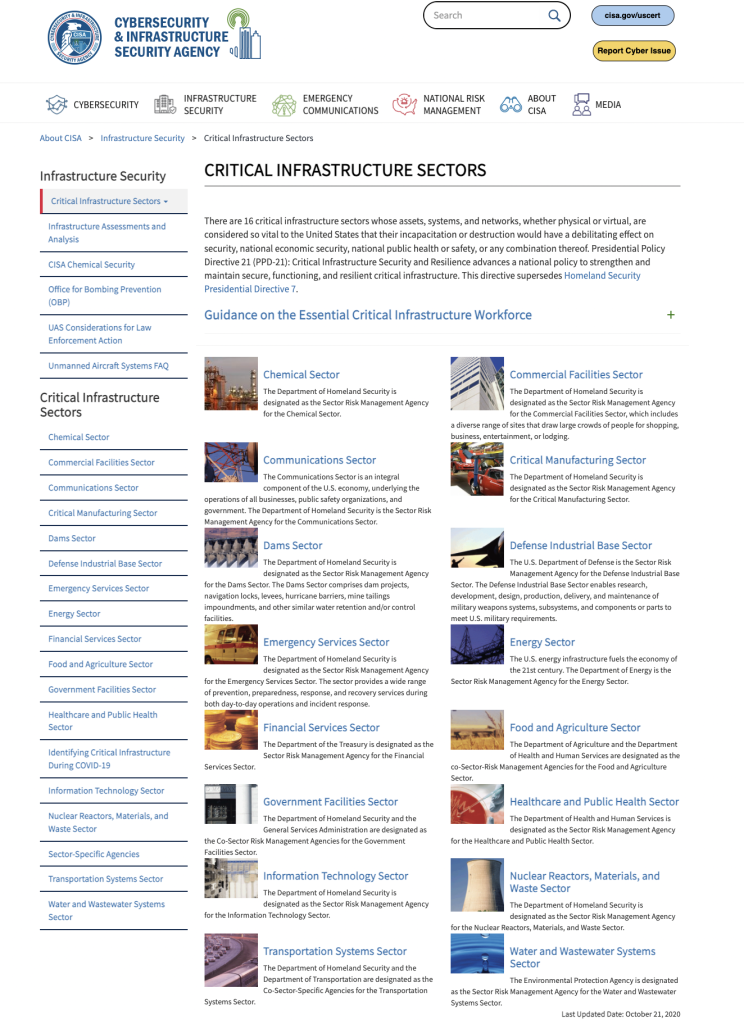
CISA/Infrastructure
Election Security Rumor Control: Critical Infrastructure
A close look at the Election Infrastructure Government Coordinating Council's (EIS GCC) Rumor Control Start-Up Guide on Election Security shows just how serious our government is about controlling information when it comes to elections, for example. Remember, many Americans have pushed state legislatures and politicians to investigate what happened in the 2020 Presidential election. However, the answer often heard from politicians and the legacy media is that those investigations are Trump's Big Lie.
Let's take a look at the Rumor Control Start-Up Guide. Partnering with CISA's MDM team, the EIS GCC has produced an elaborate 5-page guide on election security. The COVID-19 vaccines Virality Project is cited within the same document. Announced on Feb. 11: "The Virality Project is a coalition of research entities focused on supporting real-time information exchange between the disinformation research community, public health officials, civil society organizations, government agencies, and social media platforms. Our objective is to detect, analyze, and respond to incidents of false and misleading narratives related to COVID-19 vaccines across online ecosystems, enabling civil society and health communicators to ultimately mitigate the impact of narratives which might otherwise undermine the public's confidence in the safety of evidence-based policies in the United States." The project seeks to dispel Mis-, Dis-, Malformation from the "anti-vax movement." "Anti-vaccine disinformation will pose significant challenges to the rollout and public adoption of COVID-19 vaccines in the United States. The anti-vaccine movement has well-developed online networks and expertise in leveraging social channels to spread its messages. These networked activism efforts have linked longtime anti-vaccine activists, health and wellness influencers, those who object to vaccination requirements as government overreach, and politically-driven communities who have actively amplified COVID and other conspiracies. The movement is experienced, well-funded, and able to generate in-the-streets action. It has already begun to expend significant efforts to enter mainstream conversation and erode confidence in COVID-19 vaccines." Among other things, the website is populated with articles by "trusted sources" on the "spread of debunked science" and how Russia and China seek to "influence conversations in the U.S. related to COVID-19 vaccines through state media, and representatives." Weekly briefings, starting with the Virality Project Briefing 4 on Jan. 19, 2021, discuss "key narratives" and what "to look out for." In several instances, the Children's Health Defense website and other health freedom websites are cited, suggesting they are "fringe anti-vaccine groups to try to legitimize concerns about COVID-19 vaccines and other conspiratorial claims," as the page warns under the "Be On The Lookout For" section. The American Hospital Association also cites The Virality Project with a direct reference to CISA on its website. One of the administration's trusted partners is the Stanford Internet Observatory. The organization hosted a Feb. 24 webinar on the Virality Project. The Observatory is a "cyber policy center" that investigates the "spread of misinformation and disinformation" coming from social media and other sources. Notably, the organization's "first issue of the Journal of Online Trust and Safety includes research on the relationship between hate speech and COVID-19 misinformation." The editorial board is a who's who of one-sided ideology with connections to Facebook, Bellingcat, and the Media Innovation Collaboratory. Additionally, CISA invited the Stanford Internet Observatory to its 2021 Cybersummit on Mis-, Dis-, and Malinformation. The Virality Project webinar conveys the culmination of research by Stanford fellows on the subject of COVID-19 vaccine Mis, Dis, and Malinformation "to discuss the project's findings from a year of observation and analysis on COVID-19 vaccine conversations online." Working closely with the Stanford Cyber Policy Center on a number of initiatives, including the Virality Project, the Observatory coordinates with researchers and scholars from Stanford to study, among other things, how to control Mis, Dis, and Malinformation in "conversations online." The entire webinar focuses on narratives that the presenters imply are mostly conspiracy theories. Vaccine injury, poor efficacy of the vaccine, problems with safety are among the issues discussed. It is hard to ignore the presenters' bias against alternative perspectives on the vaccine and the pandemic—meaning perspectives that disagree with those held by people in high places in the government. Cameron Hickey, Project Director for Algorithmic Transparency at the National Conference on Citizenship, explains his perspective in a few excerpts below: "While there were hundreds of unique narratives tracked over the project, they all fell into one or more of these four categories. Narratives related to the safety of the vaccine, narratives related to the efficacy of the vaccine, narratives related to the distribution of the vaccine, and narratives connected to conspiracy theories about the vaccine," he stated. Hickey continued, "It's important to note that in many cases, the incidents and narratives that were identified could relate to one or two more than one of these categories. In particular, conspiracy, as we'll discuss in a moment. So first, let's talk about safety narratives. these were all incidents that in some way reinforced the idea that the COVID-19 vaccine is not safe—that is dangerous. So first, let's talk about safety narratives. These were all incidents that in some way reinforced the idea that the COVID-19 vaccine is not safe, that it is dangerous. As soon as the first vaccines were administered, we saw viral videos where people shared their first-person accounts of side effects they experienced after getting the shot. There was no evidence to prove the relationship between the shot and the side effects or even to verify if the side effects were real. But because these kinds of videos were graphic and emotional, they went viral repeatedly." Hickey's portion of the presentation also questioned natural immunity as being more protective than the shot itself. The protection afforded by natural immunity has been all but completely proven at this point in time. Hickey stated that these are "popular narrative themes that still persist today and are mistakenly reinforced by legitimate research today...these narratives serve as the 1-2 punch of 'it doesn't work' and 'it will hurt you.'" The list of federal agencies affected by politically driven bias and controlled narratives discussed here is by no means exhaustive. In fact, it seems to be the tip of the iceberg. It is scary to think that agencies in charge of important sectors like critical infrastructure seek to influence the way Americans think and interact with each other. While objectivity is difficult to achieve, the attempts to control the narrative that UncoverDC found agency-wide is disturbing and obfuscating at the very least and is, at most, potentially dangerous to our ability to think freely. Controlled narratives are not uncommon from powerful governments and such narratives can potentially produce a hypnotic process known as "brainwashing" to affect the minds of an unsuspecting public. Since the legacy media is now apparently loath to keep those in power in check, the danger of control is even greater. Censorship is more rampant than ever on many social media platforms for posts that disagree with prevailing narratives on topics ranging from COVID-19 to the war in Ukraine. Brainwashing techniques are "meant to 'change a mind radically so that its owner becomes a living puppet—a human-robot—without the atrocity being visible from the outside.'" Americans would do well to begin to poke around on the many governmental agency websites to better understand the agendas that may be coming their way.
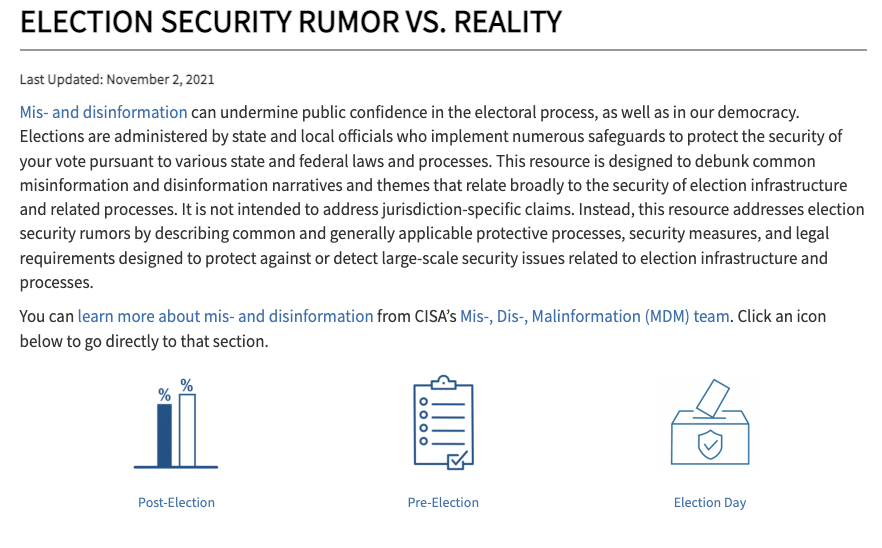
Rumor Control/election security/CISA
The Start-Up Guide specifies an intention to set up "accurate and authoritative sources of information which will help address common MDM narratives" for the public. Those sources could be at a variety of levels, federal and local. While there is merit to establishing sources of truthful information on the inner workings of elections, the guide spends a great deal of time defining what "a rumor control program" looks like. The guide discusses "trusted voices" and "credible messengers [who] are most effective at disproving falsehoods." Defining those sources of truth can arguably be a very subjective process. Many now feel the current administration has not given Americans reason to trust that it will accurately define the facts.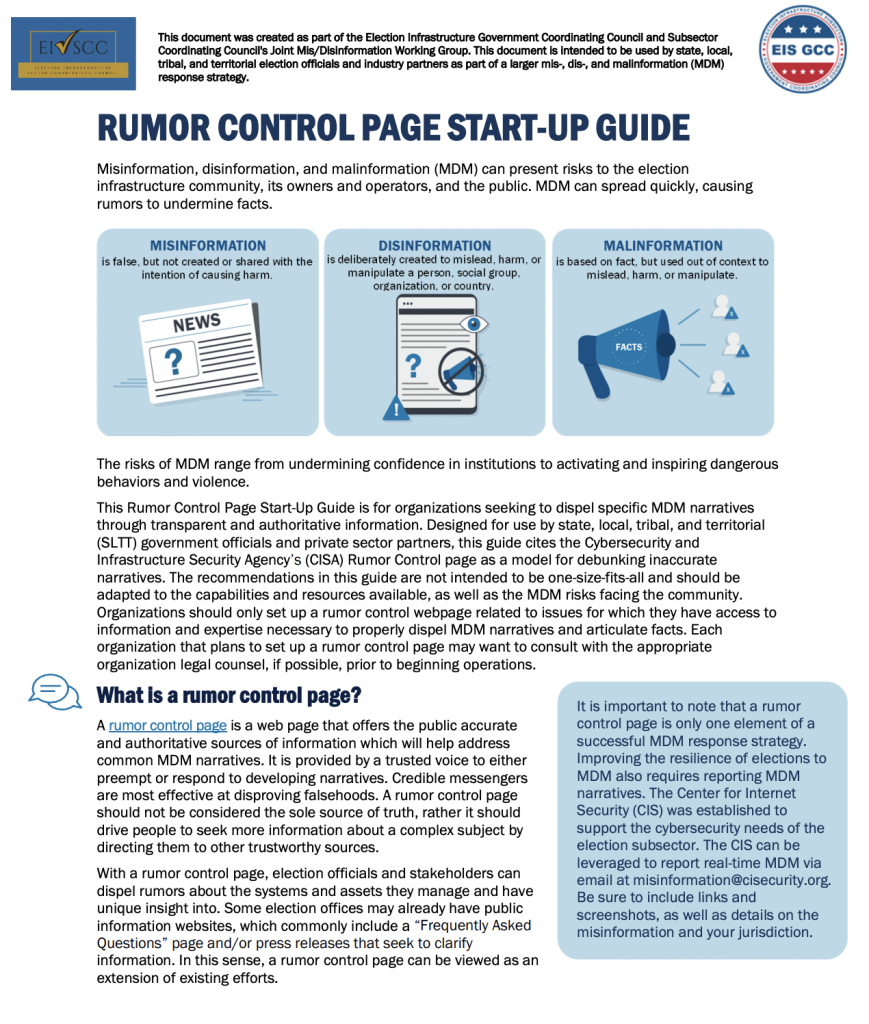
Rumor Control Start-Up Guide/p.1
The handy checklist on page 5 helps the handpicked "truthtellers" determine when a rumor needs to be addressed and how to "disrupt MDM narratives."
Rumor Control Checklist/MDM
The Virality Project: Rumor Control
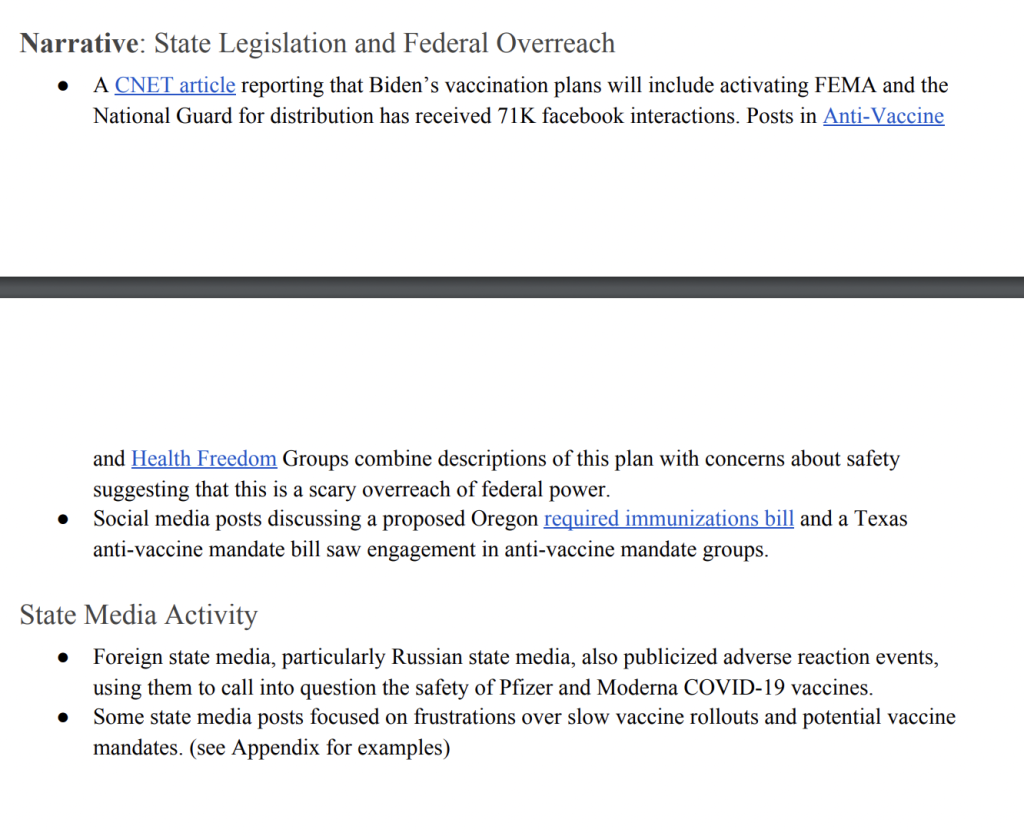
The Virality Project Briefing 4/Jan. 19, 2021
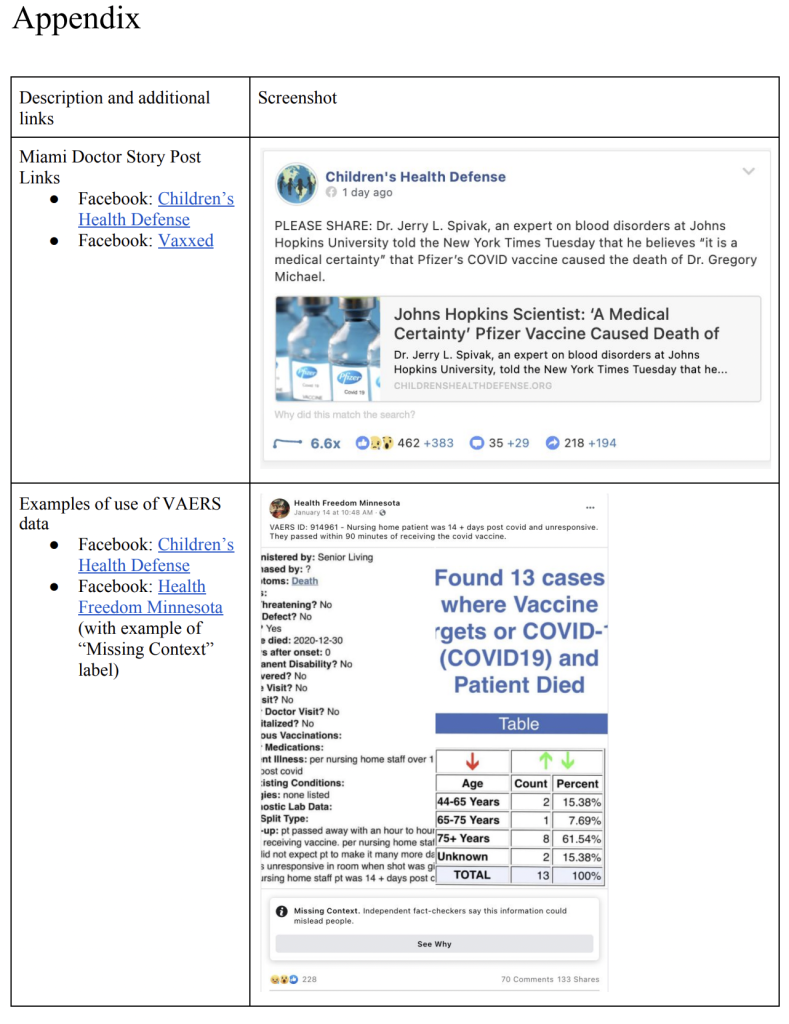
The Virality Project Briefing 4/Jan. 19, 2021
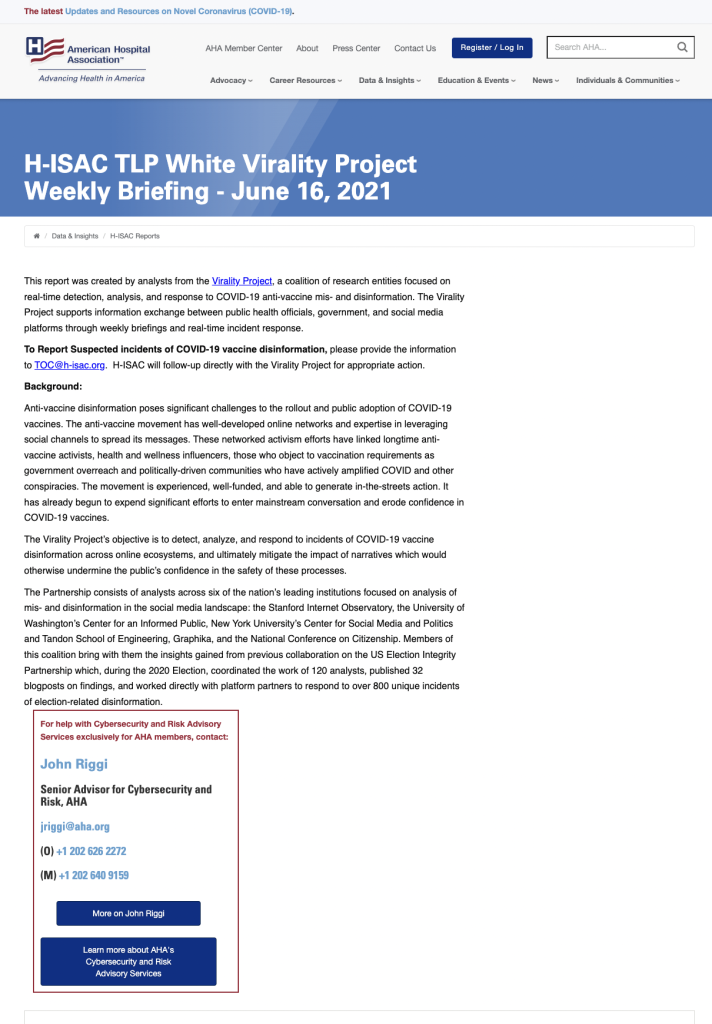
AHA/Virality Project

Stanford Internet Observatory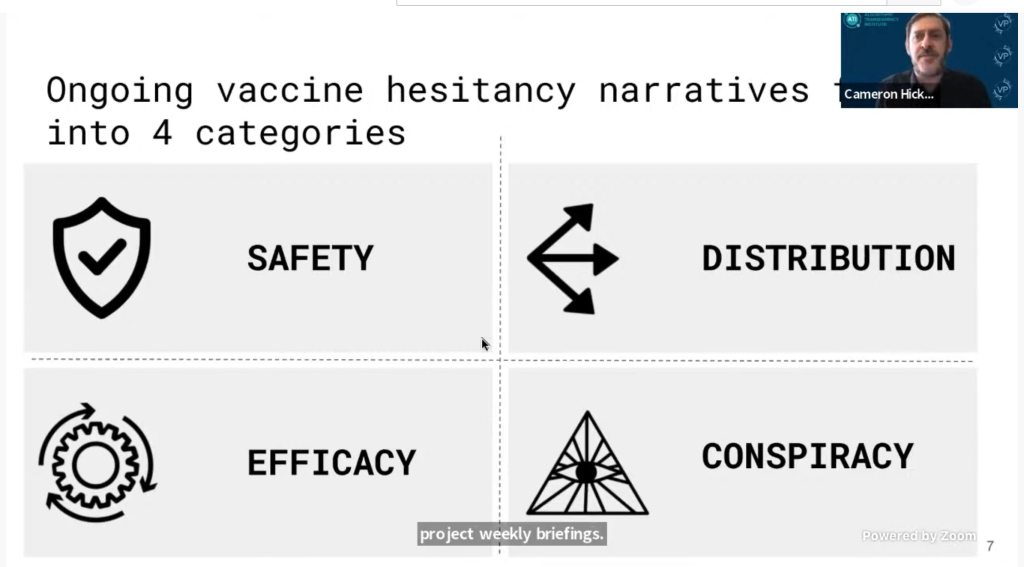
Cameron Hickey/Project Director for Algorithmic Transparency at the National Conference on Citizenship

Cameron Hickey/Project Director for Algorithmic Transparency at the National Conference on Citizenship
Cameron Hickey Project Director for Algorithmic Transparency at the National Conference on Citizenship
Americans Need Facts Not Narratives And Opinions


